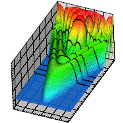Department of Physics and Astronomy: Publications and Other Research

Anthony F. Starace Publications
Document Type
Article
Date of this Version
August 1984
Abstract
This review describes primarily recent theoretical developments on highly excited atoms in uniform external fields, and complements the experimental review of Gay in the present volume. The Zeeman and Stark effects on low-lying atomic states, on the other hand, constitute a mature field of study which has been reviewed previously by Garstang, Kollath and Standage, Bayfield, and Kleppner. Most theoretical work on highly excited states in laboratory strength fields has heretofore focused on the prototype system of atomic hydrogen, and accordingly hydrogen receives special emphasis in this article. For nonhydrogenic atoms we review theoretical work using the framework of quantum defect theory. Magnetic and electric effects are treated separately and in combination. For magnetic fields of astrophysical magnitude, on the other hand, the competition between external and atomic forces becomes important for low-lying states. Recent developments in the understanding of hydrogen in such fields are reviewed here, and qualitative aspects of general atomic structure in such fields are briefly discussed.


Comments
Published in PROGRESS IN ATOMIC SPECTROSCOPY, Part C. Edited by H. J. Beyer and Hans Kleinpoppen. (New York, Plenum Publishing Corp., 1984) This article, co-authored by a U.S. government employee, is not subject to copyright.